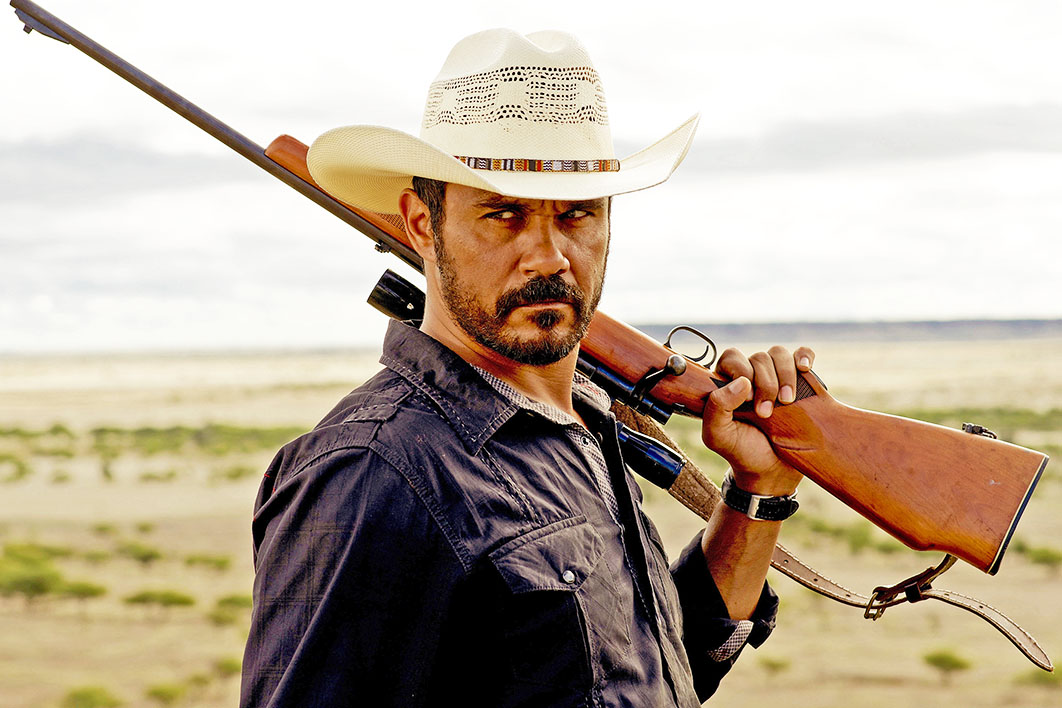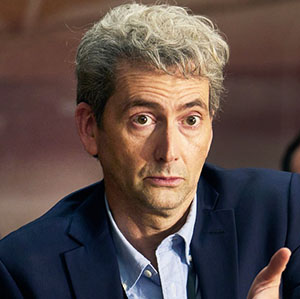Locations have emerged as one of the key selling points in the burgeoning international market for TV drama. Apart from their obvious cinematic appeal, strange and remote settings offer ways of expanding the psychological horizons of a story. Twin Peaks, The Lakes, Fargo and other classic series have shown the imaginative potency of taking the viewer “out there” into vast terrain harbouring forces mere humans can never really comprehend.
From its opening sequence — the camera panning over an abandoned vehicle in the outback, its headlights creating a small pool of light against the vastness of the night sky — Mystery Road signals its investment in the mythos of the land. Human presence arrives on a quad bike, and then in a police Landcruiser; we see the feet of the occupants make contact with desert turned to cobblestones by drought.
Water will feature as another kind of presence in Patterson, a fictional town on the banks of one of the great rivers of the East Kimberley. Cinematographer Mark Wareham indulges viewers with panoramic shots of the river-scape at dawn and dusk, a reminder that the arid landscapes where most of the action takes place are also possessed by the eternal romance of light, earth and water. Beneath the town and its prosperous cattle station lies the aquifer that feeds the tanks that fill the cattle troughs, providing one of the mysteries woven into the storyline.
With a scenic concept derived from Ivan Sen’s 2013 film Mystery Road and its sequel Goldstone (opener for the 2016 Sydney Film Festival), the series is no mere spin-off, as it is described by the ABC. Sen, who is listed as an executive producer, created two films with the stature of a saga, which have enormous potential for an extended dramatic world. In the words of Sylvia Lawson, Inside Story’s film critic until her death last year, Sen gave us “parts of a map we would rather not recognise as our own.” A strong advocate for Sen’s work, she was convinced that Mystery Road was a film of enduring poetic stature.
Director Rachel Perkins and script producer Michaeley O’Brien mine the themes and rework Sen’s map, introducing a weave of Indigenous and white Australian characters in a terrain that we can perhaps begin to recognise as our own, wherever “we” may fit in. From Sen, the creators of the series have learned the art of the slow burn. There are no sadistic murders here, no hideous scenes of kidnap and torture; the burn is in the questions.
Two boys are missing, but one seems to have been using two identities. Drugs have been trafficked, so who are the dealers? Local man Larry Dime has been released from jail after serving time for a brutal paedophile rape, but did he really do it? And the water from all the bores on the cattle station… where does it go?
Aaron Pedersen reprises his role as detective Jay Swan, called in by Emma James (Judy Davis), who runs the local police station, to assist in the search for the missing boys. Like all the best detectives, he is something of a lone ranger. He has a way of moving around the place in circles, and he never stops asking questions. But people here don’t like questions. Almost all of them have a story they don’t want to tell: a family thing, a buried resentment or an unresolved conflict.
They aren’t always hiding something — rather, suppression has become a survival strategy in this crisis-ridden environment. They have learnt how to skirt the flare-ups rather than steer into them. They are adept at the blank gaze that gives nothing away, the half statement that blocks enquiries. All this makes for a sharp edge of tension in the exchanges, and a dramatic contrast to the tell-all, show-all style of so many ABC dramas.
Casting director Anousha Zarkesh has served the production well. The art of suppression makes subtler and more interesting demands of the actor than emotional display does, and the cast works as a finely tuned ensemble committed to the interplay of non-disclosure. It’s up to the viewer to read what’s going on between them, and that’s what keeps you glued to the screen. Pedersen has superb timing, often stretching out a response till you are unsure if he has one, but he can also startle with a lightning comeback. Wayne Blair, as the outcast paedophile, fronts up to the community that spurns him, his immobile face a shield against every insult. What’s really going on behind that expression? You need to know, and the challenge is as gripping as any of the more gruesome lures of the conventional crime story.
Deborah Mailman, playing Dime’s sister and the mother of one of the missing boys, stands out as the only character in touch with her emotions. There’s a softness about her that shows a different kind of courage. In a place where abuse and trauma are the norm, it takes bravery to allow yourself to feel anything.
A cast featuring Pedersen, Mailman, Davis and (as cattle-station owner Tony Ballantyne) Colin Friels might seem like an invitation to nominate “outstanding performances,” but the real strength of the casting is that it doesn’t work like that. The ensemble approach calls for the same level of discipline and nuance across all the performances. That’s how genuine dramatic tension is generated.
The ensemble principle has to feed through to the crew as well. Sen is an auteur who does his own sound, music, camera work, editing and scripting, but here those roles are distributed to specialists. Mark Wareham’s camera work draws on all the techniques of advanced television cinematography: the helicopter shots of sweeping expanses of landscape, the use of reflective surfaces to confuse focus and perspective, the juxtaposition of visual distance with close-up sound. Sound editor Dylan Barfield makes brilliant play of closeness and distance. Composers Antony Partos and Matteo Zingales support the mood with a rich score of instrumental tension music and vocal ballads.
Mystery Road is the first Australian drama series I’ve seen in a long time that really deserves an international audience. For sophistication, originality, edge and atmosphere it’s up there with Fargo. •




